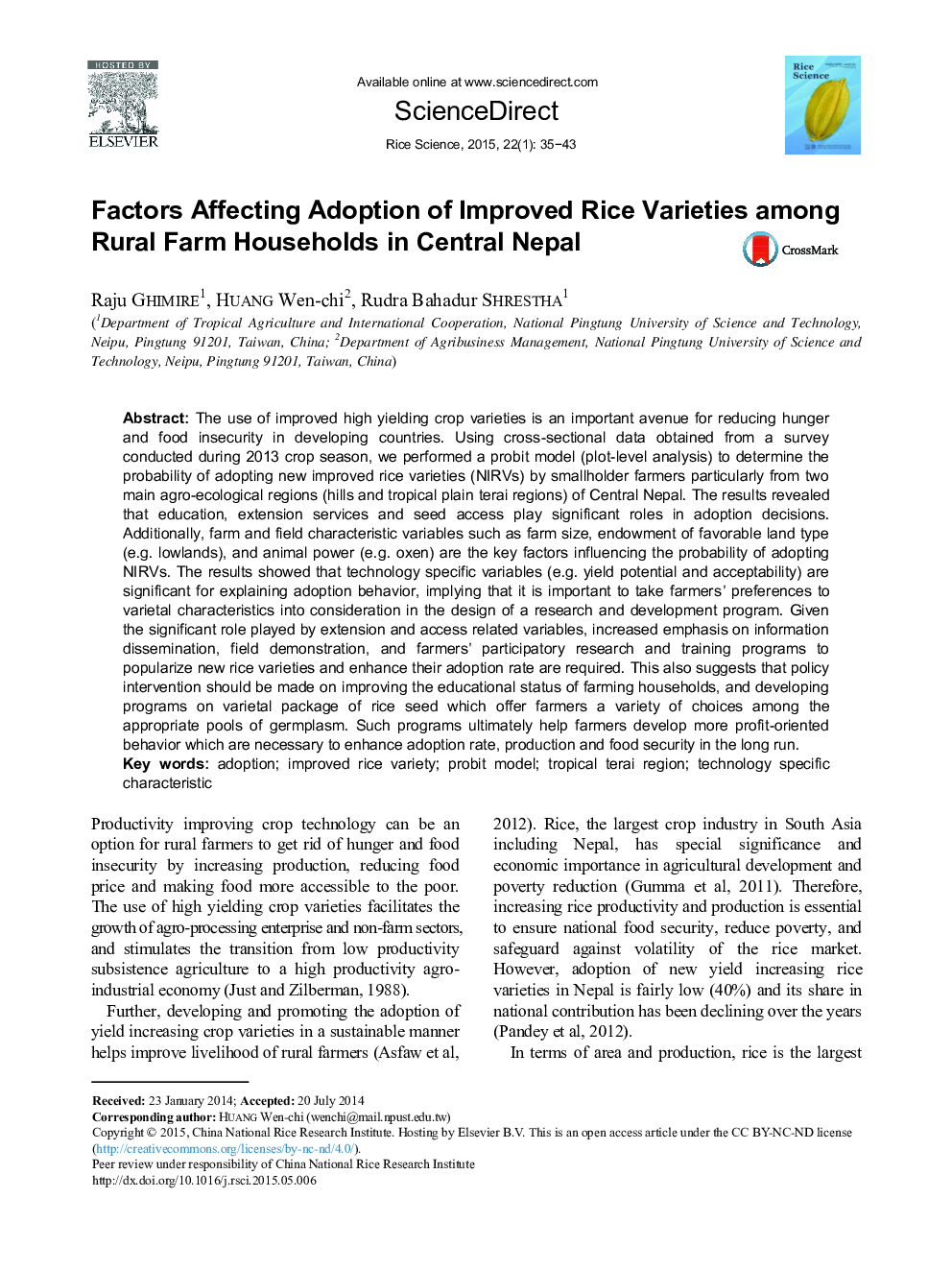| Article ID | Journal | Published Year | Pages | File Type |
|---|---|---|---|---|
| 4501785 | Rice Science | 2015 | 9 Pages |
The use of improved high yielding crop varieties is an important avenue for reducing hunger and food insecurity in developing countries. Using cross-sectional data obtained from a survey conducted during 2013 crop season, we performed a probit model (plot-level analysis) to determine the probability of adopting new improved rice varieties (NIRVs) by smallholder farmers particularly from two main agro-ecological regions (hills and tropical plain terai regions) of Central Nepal. The results revealed that education, extension services and seed access play significant roles in adoption decisions. Additionally, farm and field characteristic variables such as farm size, endowment of favorable land type (e.g. lowlands), and animal power (e.g. oxen) are the key factors influencing the probability of adopting NIRVs. The results showed that technology specific variables (e.g. yield potential and acceptability) are significant for explaining adoption behavior, implying that it is important to take farmers’ preferences to varietal characteristics into consideration in the design of a research and development program. Given the significant role played by extension and access related variables, increased emphasis on information dissemination, field demonstration, and farmers’ participatory research and training programs to popularize new rice varieties and enhance their adoption rate are required. This also suggests that policy intervention should be made on improving the educational status of farming households, and developing programs on varietal package of rice seed which offer farmers a variety of choices among the appropriate pools of germplasm. Such programs ultimately help farmers develop more profit-oriented behavior which are necessary to enhance adoption rate, production and food security in the long run.
